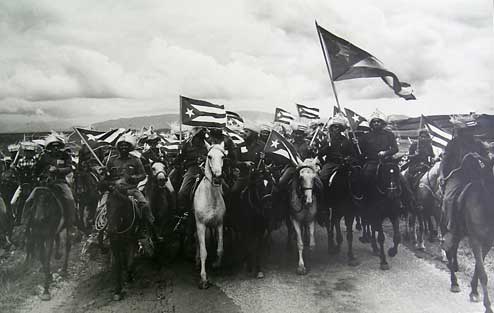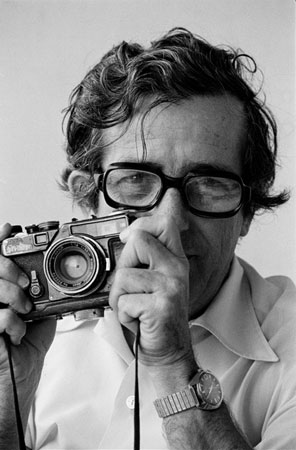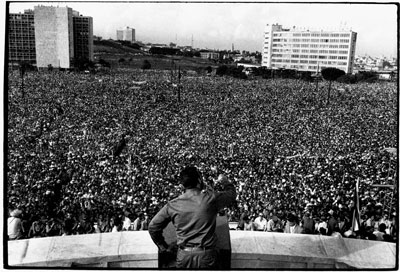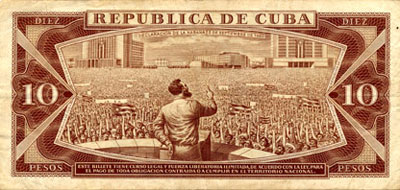EFE Servicios Born in 1925, Corrales was for almost 60 years "a paradigm of Cuban photography" and his death represents "a regrettable loss" to Cuban culture, the station added. Along with Alberto Diaz "Korda," author of the most famous photo taken of Argentine-born Cuban revolutionary icon Ernesto "Che" Guevara; and Osvaldo Salas; Corrales is recognized as one of the leading figures of the so-called "Epic Photography of the Cuba Revolution" period that followed Fidel Castro's rise to power in 1959. He also is known for important photographs of the April 1961 Bay of Pigs invasion, one of which was published Saturday by the Granma official daily. According to the television report, Corrales, whose cause of death was not revealed, was buried Saturday afternoon. 2006 © The Denver Post |
|
Snapshot
of Raul Corrales
by
Ciro Bianchi Ross
Cubanow- He was one of the great Cuban photo-reporters. Critics highlight his ability to synthesize, to show details and his sculptural treatment of light without blotting out the meaning of the direct message, a way of looking at life and the noble way in which he treated human beings.
One of his photos: The Dream, is considered among the one hundred best images in the history of photography. But beyond this or that title, Raul Corrales (National Plastic Arts Award) gave testimony and graphically documented the early years of the Cuban Revolution.
There isn’t one important event in that period which his lens did not capture.
 |
| Caballería 1960 © Raul Corrales |
That was from 1959 to 1964, when Corrales was a member of the photographic teams in Revolucion daily and Cuba magazine. Before, in Carteles magazine, his work had also been outstanding.
He reached the most unimaginable places in Cuba to show how the poor farmers in the mountains and the coal makers in the marshes, the sugar-cane cutters and the miners lived and died. Those coverages were true denunciations, a call for awareness.
|
| 1st. Declaration of La Habana, Plaza de la Revolución. September 2, 1960© Raul Corrales |
|
| One of the very few, if not the only photographer in the world,
to have ever had a photograph of his become an image in the currency of his country. Raul Corrales had such a distinction. |
“When there is no longer misery in Cuba,” said one day to Raul Corrales the also classic Alberto Korda, “you’re going to starve to death.” By sheer miracle, Corrales hadn’t starved to death until then. Before he started in photography, he was forced to undertake the most modest jobs: newspaper boy, fruit seller, a shoe-shine boy, cleaning boy… Also, a valet to Mexican filmmaker Jorge Negrete during his presentations in Cuba…
He was able to save enough money to buy a small 127 mm camera. He took pictures with it but he didn’t print them. He was happy to look at the negatives with a magnifying glass before a lamp. That was when he landed a job with Cuba Sono Films and became a professional photographer. It was 1944.
Long gone are those times when Raul Corrales, carrying a 4 x 5 Speed Graphis camera and a bag full of frames and bulbs, wondered throughout Havana looking for news. When he turned 80, he had an archive with thousands of unprinted negatives; four books published –one of them dedicated to Ernest Hemingway- and his prestige becomes greater each day inside and out of the island.
Cubanow © Ciro Bianchi Ross



